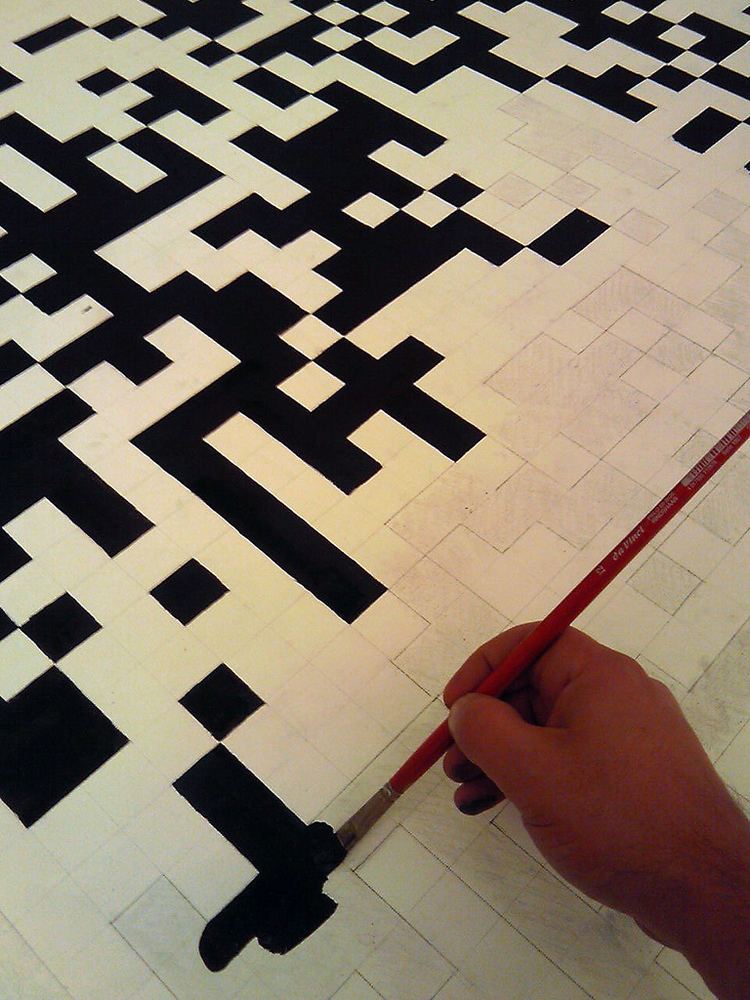Nationality Italian-Belgian Name Fabrice Nola | Role Artist | |
 | ||
Known for Conceptual art, Painting, Photography | ||
The Mirror - Teaser
Fabrice de Nola is an Italian-Belgian artist born in Messina (Sicily) in 1964. He introduced the use of QR codes in oil paintings. In 2006, he created the first oil paintings containing texts and web connections to be used on mobile phones.
Contents
Mirage
Biography

The son of an Italian mother and a Belgian father, Fabrice de Nola lived in Messina until 1981. He attended the Art school in Palermo, but left after one year in order to pursue his interest in photography. At the end of the 1980s he moved to Milan, and thereafter to Mechelen, his father’s hometown.
In the mid-1980s he worked as a scene-painter in Geneva, Cairo and Rome. In those early years, he used photocopiers and photography as techniques in support of his painting. In the mid-1990s, the computer became an essential tool for the preparation and pre-production of his paintings.

In 1996, he showed at the Il Ponte Contemporanea Gallery in Rome where he remained until the year 2000.
In 1997, Fabio Sargentini invited Fabrice de Nola to the Palermo exhibition Giro d’Italia dell’Arte curated by Demetrio Paparoni, a survey of young Italian artists, at the l’Attico Gallery. That same year he participated in Roma, 4 young painters, which showed four Roman painters and was curated by Fabio Sargentini at the Generous Miracles Gallery in New York.
In 1999, during the 48th Biennal of Venice, he exhibited in Authoritratti italiani at the Fondazione Bevilacqua La Masa. Posters were put up at that time in Venice reproducing his works. De Nola painted a self-portrait using photographs, CT and X-rays: painted on one half is his face, while on the other half the interior is visible, showing skull, muscles, eyeball and brain.
In 2000, he took part in two group shows in Rome: Lungo il muro del Gasometro at the Teatro India Gallery and Giganti at the Imperial Forum of Nerva. He also showed that year in Sui generis at the PAC in Milan.
In 2001, he created a work on the building site of the Auditorium of Rome. The painting was commissioned by the Ministry of Culture for the permanent collection of MACRO. That same year he participated in the Le Muse inquietanti at the Pascali Museum in Bari and Dalla Mini al mini at the Palazzo delle Esposizioni in Rome.
In 2003, de Nola showed his Neural Pro project in a one-man show at Palazzo Isnello at Il Genio of Palermo. In Rome he exhibited the series Air Ocean at the Teatro Umberto and two large canvases from the Cerasi Collection at the Cloister of Bramante. The Italian Ministry of Foreign Affairs invited him to the Futuro italiano exhibition at the European Parliament in Brussels.
In 2006, he created the first oil painting using painted QR code. The work has been exhibited the same year in Milan. In 2007, the Ministry of Foreign Affairs commissioned two works from him for the Farnesina Experimenta Art Collection.
In 2008, he participated in the VII International Festival of Photography of Rome with his show Skip Life, and he was also invited to the 15th Rome Quadriennale where he presented an advertising installation for the fake Neural Pro Company.
